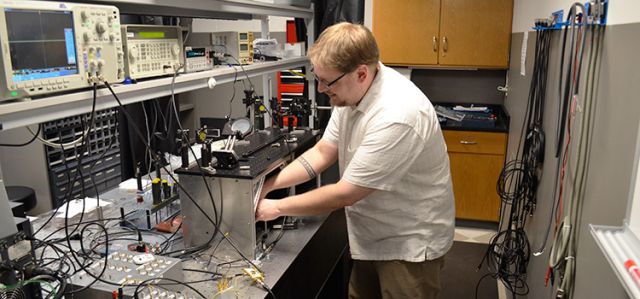Document Type
Article
Publication Date
6-10-2016
Publication Source
Applied Optics
Abstract
3-D holographic ladar uses digital holography with frequency diversity to add the ability to resolve targets in range. A key challenge is that since individual frequency samples are not recorded simultaneously, differential phase aberrations may exist between them making it difficult to achieve range compression. We describe steps specific to this modality so that phase gradient algorithms (PGA) can be applied to 3-D holographic ladar data for phase corrections across multiple temporal frequency samples. Substantial improvement of range compression is demonstrated with a laboratory experiment where our modified PGA technique is applied. Additionally, the PGA estimator is demonstrated to be efficient for this application and the maximum entropy saturation behavior of the estimator is analytically described.
Inclusive pages
4611-4620
ISBN/ISSN
1559-128X
Document Version
Postprint
Copyright
Copyright © 2016 Optical Society of America
Publisher
Optical Society of America
Volume
55
Issue
17
Peer Reviewed
yes
Keywords
Digital holography, Remote sensing and sensors, Lidar, Optical sensingand sensors, Synthetic aperture radar, Three-dimensional image processing
eCommons Citation
Stafford, Jason W.; Duncan, Bradley D.; and Rabb, David J., "Phase Gradient Algorithm Method for 3-D Holographic Ladar Imaging" (2016). Electro-Optics and Photonics Faculty Publications. 41.
https://ecommons.udayton.edu/eop_fac_pub/41




Comments
The document available for download upon expiration of the publisher's required embargo is the authors' accepted manuscript, provided in compliance with the publisher's policy on self-archiving. Permission documentation is on file. View the version of record using the DOI provided.